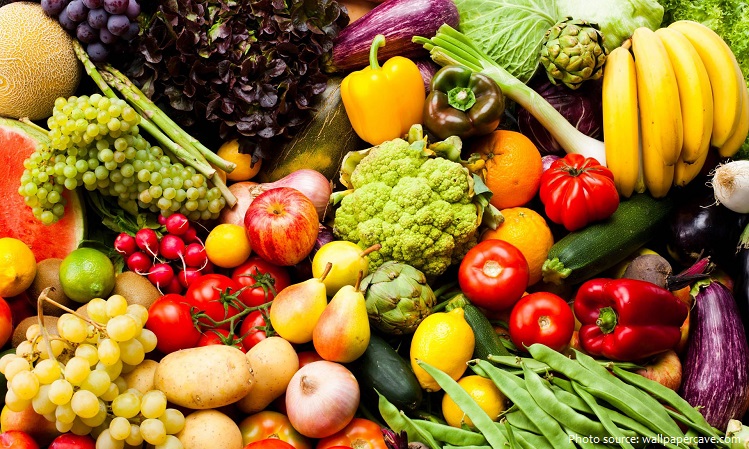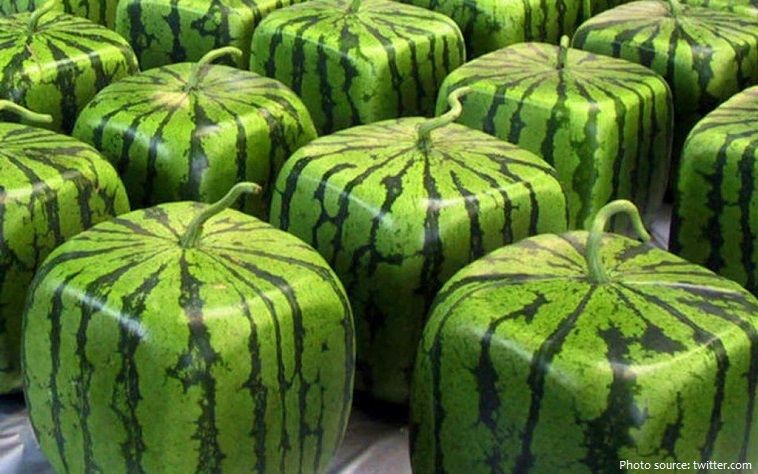In botany, a fruit is the seed-bearing structure in flowering plants formed from the ovary after flowering.
In common language usage, “fruit” normally means the fleshy seed-associated structures of a plant that are sweet or sour, and edible in the raw state, such as apples, bananas, grapes, lemons, oranges, and strawberries.
Many botanical fruits are known as vegetables in common language such as tomato, eggplant, zucchini, peppers, cucumber, olives, beans, green beans, and peas.
Also, botanically, a cereal grain, such as corn, rice, or wheat, is also a kind of fruit.
Fruits are important sources of dietary fibre, vitamins (especially vitamin C), and antioxidants.
Bananas are the most popular fruit in the world: in fact, over 100 billion bananas are eaten around the world every year, and around 51% of these are eaten at breakfast time.
Bananas are believed to have originated up to 10,000 years ago and some scientists believe they may have been the world’s first fruit.
The apple is popularly known as the supposed forbidden fruit of Eden. But this is not mentioned anywhere in the Bible!
There is a classic story that Sir Isaac Newton came up with his law of gravity when an apple fell on his head.
There are about 200 seeds on an average strawberry.
Unlike some other fruits, strawberries don’t continue to ripen after being picked, so if they don’t look ripe, they never will be.
Strawberries and cream is a popular dessert during the British summer, famously consumed at the Wimbledon tennis tournament.
There is a museum in Belgium dedicated to strawberries. In the gift shop at Le Musée de la Fraise (The Strawberry Museum), you can buy everything from strawberry jam to strawberry beer.
World’s most expensive pear is Buddha shaped pears $9.00 each. These pears look exactly like a Buddha statue, even down to the facial details. A mold was made by Chinese farmer Xianzhang Hao of the Hebei province.
The Yubari Melon (also known as Yubari king) is assumed to be the world’s most expensive fruit, costing around $23,000 per pair.
It takes about 1,1 kg (2.5 pounds) of grape for the production of one bottle of wine.
Figs have a 55% natural sugar content, making them the sweetest of all fruits.
Low-acid white-fleshed peaches are the most popular kinds in China, Japan, and neighbouring Asian countries, while Europeans and North Americans have historically favoured the acidic, yellow-fleshed cultivars.
In China, peach is a symbol of good luck, protection and longevity.
In the Chinese culture, the word for apples is pronounced as ‘ping’ which also stands for peace. This is why apples are a popular gift to give when visiting someone in China.
In early Christian artwork, raspberries were used to symbolize kindness.
Square watermelons are watermelons grown into the shape of a cube. The Japanese created them to fit more compactly in fridges and be able to be cut more easily (without rolling). They were invented by graphic designer Tomoyuki Ono in 1978. They are very expensive, with prices as high as $100. Since the advent of the square watermelon, other watermelon shapes have been introduced, such as hearts and pyramids.
Pineapple has protein bromelain that degrade meat. So if you put a piece of pineapple somewhere in your mouth it will start eating you.
According to The Reams Biological Ionization Theory (RBTI), the lemon is the ONLY food in the world that is anionic (an ion with a negative charge). All other foods are cationic (the ion has a positive charge.) This makes it extremely useful to health as it is the interaction between anions and cations that ultimately provides all cell energy.
The color orange is named after the orange fruit. Before orange made its way from China to Europe, yellow-red was called simply that: yellow-red, or even just red.
Orange peel can be used by gardeners to sprinkle over vegetables as a slug repellent.
The name pomegranate derives from medieval Latin pōmum meaning “apple” and grānātum meaning “seeded.”
Blueberries were called “star berries” by Native Americans because the five points of blueberry blossoms make a star shape.
The alchemist and confectioner Nostradamus left several written recipes for quince compote in his book. His writings explained that chefs who peeled the fruit before cooking it did not know what they were doing, as the skin actually accentuates the smell of the fruit.







